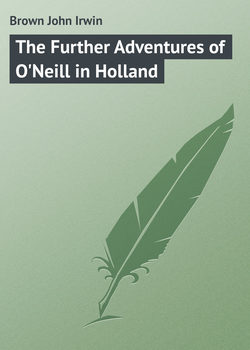Читать книгу The Further Adventures of O'Neill in Holland - Brown John Irwin - Страница 1
CHAPTER I
WHERE DID O’NEILL’S DUTCH COME FROM?
ОглавлениеWe had all heard something of Jack O’Neill’s adventures in Holland; and the members of our informal little club in Trinity College Dublin were positively thirsting for fresh details. There must be much more to tell, we felt sure: and we had a multitude of questions to ask.
Now the odd thing about O’Neill was that he didn’t like to be interrogated; he preferred to tell his story straight through in his own way. He had evidently studied hard at the Dutch language, but without the least regard for system: and it was clear that he had been by no means careful in the choice of text books. Indeed, he seemed to be rather sensitive on this point, no doubt regretting that, in the ardour of his early enthusiasm, he had just taken the first grammar and exercise-book he could lay his hands upon, without consulting anybody. It was that curious plan of doing everything by himself that doubtless led him into the initial mistake, that of trying to get any sense out of “Boyton and Brandnetel”.
A GREAT WORK
Apparently he had kept that “literary find” by him for reference, and for digging stray idioms and rules out of, while he added more modern volumes to his working stock. This would account for his glibness in rattling off out-of-the-way phrases, and for that rich bizarre flavour which his simplest Dutch utterance undoubtedly had.
But we didn’t know the worst.
Intentionally vague though he was in talking about his authorities, we ran him to earth (so to speak) at last in the matter of “Boyton and Brandnetel”; and had a happy evening.
That book was all O’Neill told us, and more. Printed on paper that seemed a cross between canvas and blot-sheet, it bore the date 1805. It was very Frenchified, and the English puzzled us extremely. Here is the Preface – or a part of it.
The following WORK was, originally, compiled by William Boyton. After passing five Editions, a Sixth appeared partly enlarged, and partly improved, by Jac. Brandnetel. This last Edition was published, at the Hague, in the Year, 1751.
THE CIVILIZED LADY
The several particles, of Speech, are arranged by the usual Order; and Declare with precision; every rule being followed, with practical exercise. This Mode, of teaching, being already appreciated; it will not be deemed Essential; nor do we, point out, the utility of it. As to Syntax; it is fully treated: whilst, last not least, cares have been exercised, to unite ease with simplicity, accuracy with idiom, and animate the Learner. It aims at the pupil of High-Life, and to acquire the Polish of the civilized Lady.
THE HAGUE, 1805.
This brilliant introduction raised our expectations to fever heat. We had never encountered such an army of commas before; and as for the English – !
Anything, evidently, might be met with inside the covers of William Boyton’s ‘Work’.
BOYTON ANIMATES THE LEARNER
The best of it, of course, was its extraordinary politeness. Every other question was prefixed with “Verschoon my”, and went on something like this: “Zoudt gij zoo goed willen zijn mij toe te staan…”. Then there were some plain and unornamental phrases such as “Men weet nooit hoe een koe eenen haas vangt”. – This was labelled ‘proverbial expression’, and was translated, happily enough, by “The unexpected often occurs.”
“Ik heb er het land aan je” was rendered mysteriously: “I have an objection”, “I cannot agree”.
That was puzzling enough, and delightfully vague! But for all that found the phrase doubly underlined by O’Neill and marked by him as ‘useful for general conversation’. —
